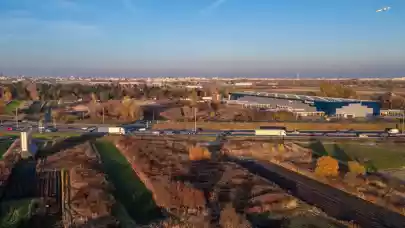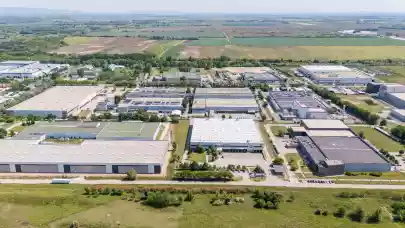
Falling interest rates, soaring housing prices, and growing demand for flexibility are creating fertile ground for the rapid growth of Poland’s institutional rental sector. In this interview, Elżbieta Chmiel, Member of the Management Board at PFR Nieruchomości, highlights who the main tenants of PRS are, how well-designed projects can meet both residents’ and investors’ needs, and why prefabrication and public–private partnerships are key to delivering modern, affordable housing across the country.
This interview was originally published in Property Forum's annual "The 50 Most Influential People in Polish Real Estate" publication.
Interest rate cuts, both in Poland and in the eurozone, combined with high housing prices, seem to be favourable conditions for the development of the institutional rental segment. Do you agree with this opinion?
Definitely yes, although I would point out that the impact of interest rate cuts should be viewed from two perspectives. On the one hand, lower rates make it easier to finance new investments – the cost of capital is reduced, which increases the security of planning and expanding the supply of apartments for institutional rental. On the other hand, high purchase prices mean that more and more people postpone the decision to buy and instead choose to rent, as it is a more affordable and flexible solution.
Looking at Western Europe, where institutional rental accounts on average for 30–40% of the market, we can see that this trend is well established. Poland, where PRS is still in its early stages, has enormous growth potential. For me personally, the key point is that current conditions allow people to move into apartments that meet their needs much more quickly – without having to wait years to accumulate a down payment or to pay off a mortgage.
Who are the tenants using PRS services in Poland? Who is your target audience?
We see three main tenant groups in Poland’s PRS market. The first group is young families, who are attracted to PRS because the apartments tend to be larger, well-connected, and close to schools and essential services. Crucially, renting a spacious unit in PRS is often far more cost-competitive than purchasing a comparable property in the same location.
The second group is young professionals entering the job market. Many do not yet have the capital for a down payment, which in Poland typically represents 10–20% of the property value. Institutional rental gives them the ability to live comfortably without the financial risks and long-term obligations of a mortgage.
The third group consists of tenants who highly value flexibility. PRS allows them to live as long as they want, with whom they want, and to relocate easily if personal or professional circumstances change. More broadly, PRS appeals to people who want a stable and secure place to live, but who do not want to be tied to a single property for decades.
The so-called rent gap („luka czynszowa”) in Poland – can this problem be solved at all?
The affordability gap affects roughly 30% of society – people who earn too much to qualify for state assistance, yet too little to purchase a home or rent at full market rates. This is a significant segment of the population whose needs cannot be overlooked.
Addressing this challenge requires systemic measures, including changes in construction and tax regulations, as well as coordinated support at both the local and national levels.
From our side, we provide a professional rental offering that helps stabilise the market while setting high standards of quality. Tenants benefit from the assurance that apartments are new, well-equipped, and available at fair prices. In addition, as the only investor working in partnership with local governments, we enable access to subsidies from the National Development Bank (BGK). This allows many of our tenants to afford brand-new housing and meaningfully improve their quality of life.
What do you think the ideal PRS project should look like? What determines the success of such an investment?
The ideal PRS project is one that has been thoughtfully designed for both residents and investors. From the residents’ perspective, the key factors are location, access to public transport, proximity to services, green areas, schools, and kindergartens. That is why every project we undertake is preceded by detailed local market analyses. We then work with leading architectural studios to deliver apartments in a variety of layouts, well connected to the city, with family-friendly spaces, bike and stroller facilities, and vibrant cafés and shops nearby.
From the investor’s perspective, success comes down to stable returns and predictable costs. PRS offers this through long-term leases, low tenant turnover, and lower management costs thanks to scale. In Western Europe, the average annual return on PRS is around 4–6%. Poland, with its growing demand, has the potential to achieve similar results. Additionally, favourable regulatory and tax changes can make this segment even more attractive.
You use prefabricated elements in your new projects. In Poland, this technology is associated with the “large panel” buildings from the previous communist era. Aren’t you afraid of a negative reaction from customers?
We are not concerned about such associations, because today’s prefabrication has nothing in common with the “large-panel” blocks of decades past. This is a state-of-the-art technology widely used across Europe – in Germany, Scandinavia, and the Netherlands. It guarantees consistent quality, precision of construction, and, most importantly for residents, shorter waiting times for their apartments.
Take Sochaczew, for example, a town near Warsaw and close to the country’s largest infrastructure investment – the Central Transportation Hub. Thanks to prefabrication, we will be able to hand over apartments there as early as next year. That makes a tremendous difference for people eager to move quickly into new homes. Prefabrication also means a smaller environmental footprint – less waste on-site, reduced noise, and fewer disruptions for neighbouring communities. It is a faster, more sustainable technology, fully aligned with modern quality standards.
What are PFR Nieruchomości’s plans for the next 12 months?
At PFR Nieruchomości, we have set clear objectives for the coming year, both in terms of scale and geographical expansion. First, we are continuing our role as a pioneer in Poland’s institutional private rented sector (PRS). Our aim is to showcase how to balance standards, deliver quality, aesthetics, and comfort, and provide the transparency that tenants increasingly expect.
Second, we are extending our territorial reach. In the coming months, we plan to enter new markets, including Lublin, Skawina, and Elbląg. Projects in these cities are already nearing completion and will soon be available for tenants. Of course, we recognise the challenges – demographics, migration trends, and the stability of local rental prices.
However, if we take Lublin as an example, the risk balance is favourable. Despite potential population declines in the surrounding region, the city’s academic role and its administrative and service functions continue to attract people, helping to stabilise demand.




